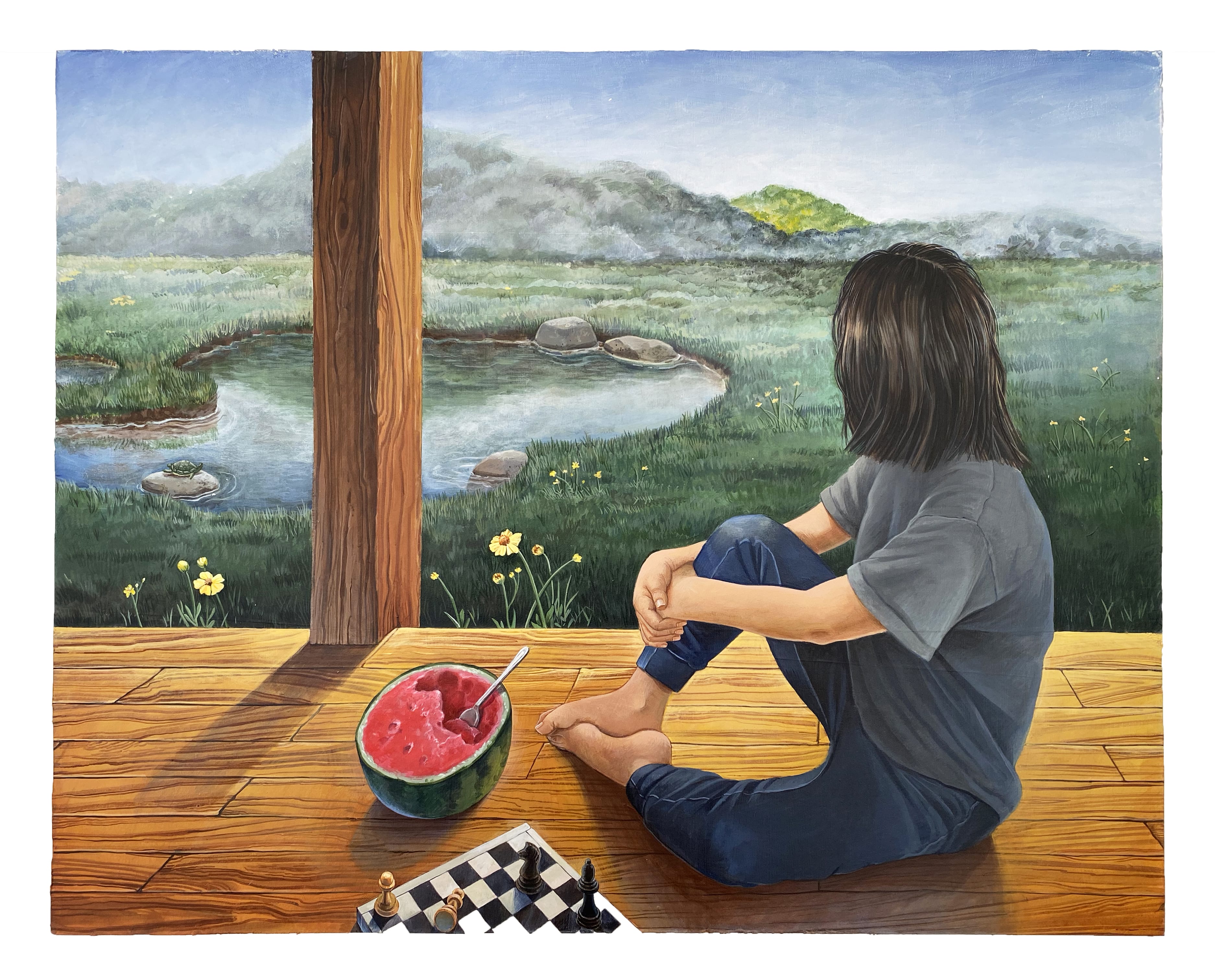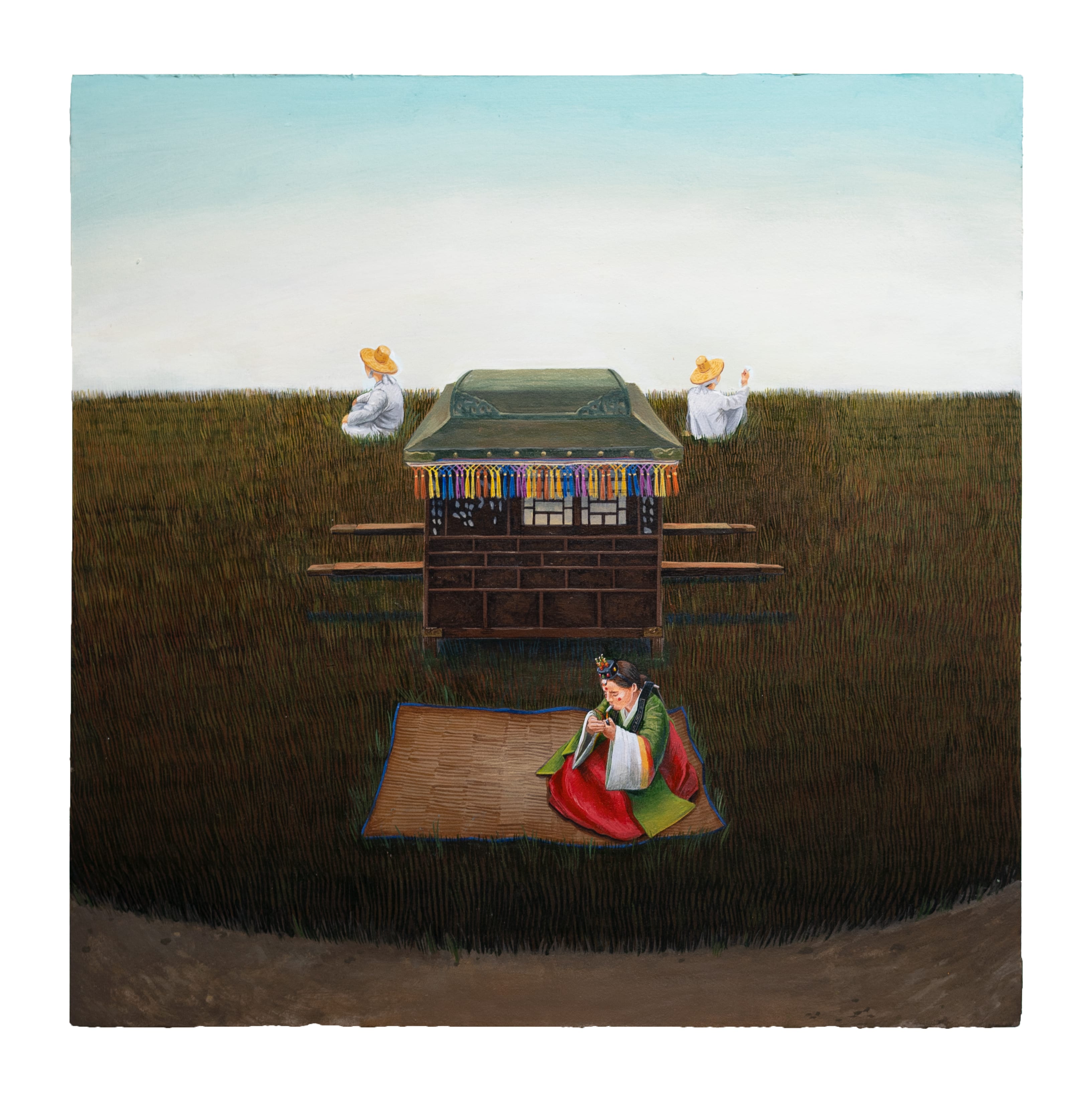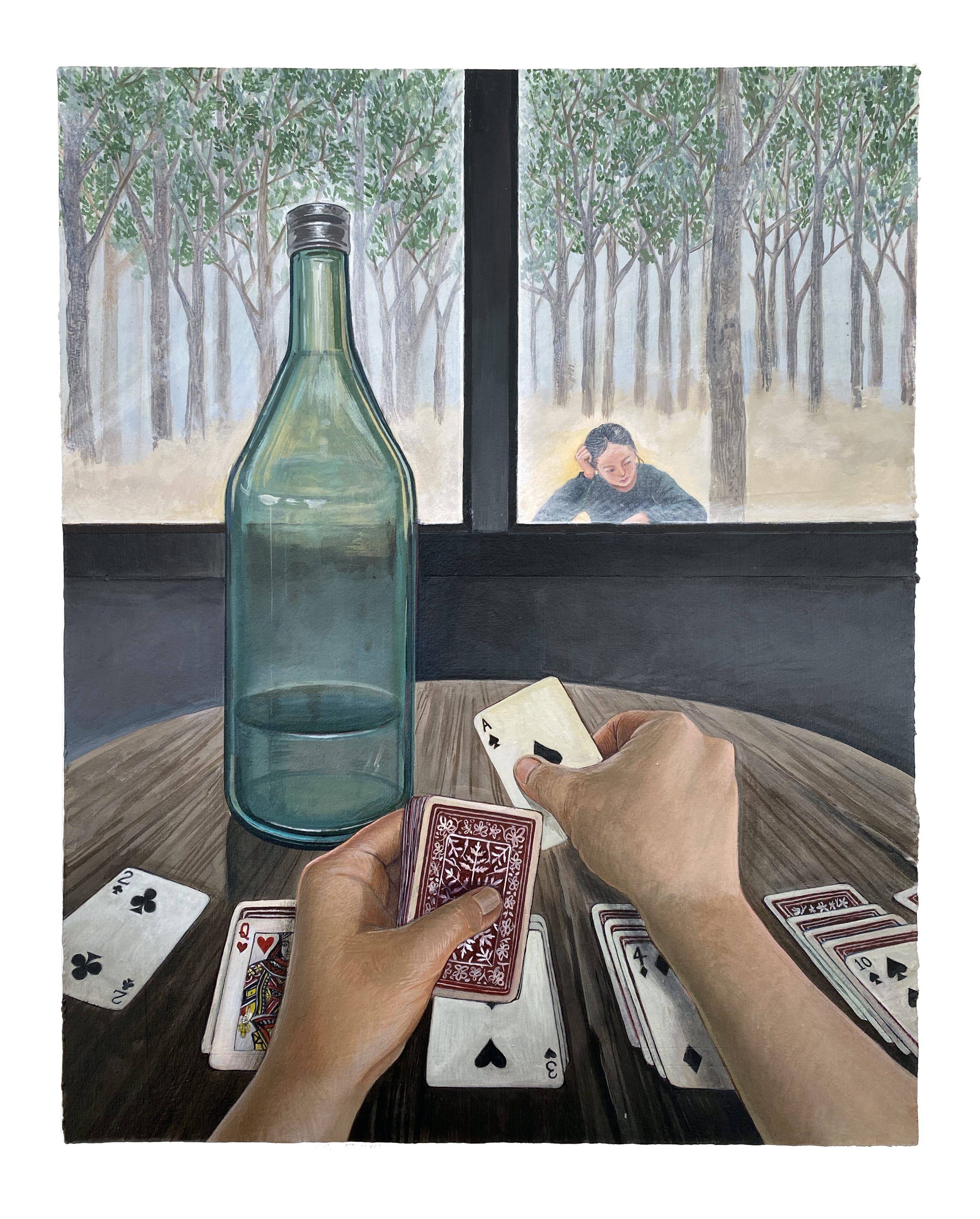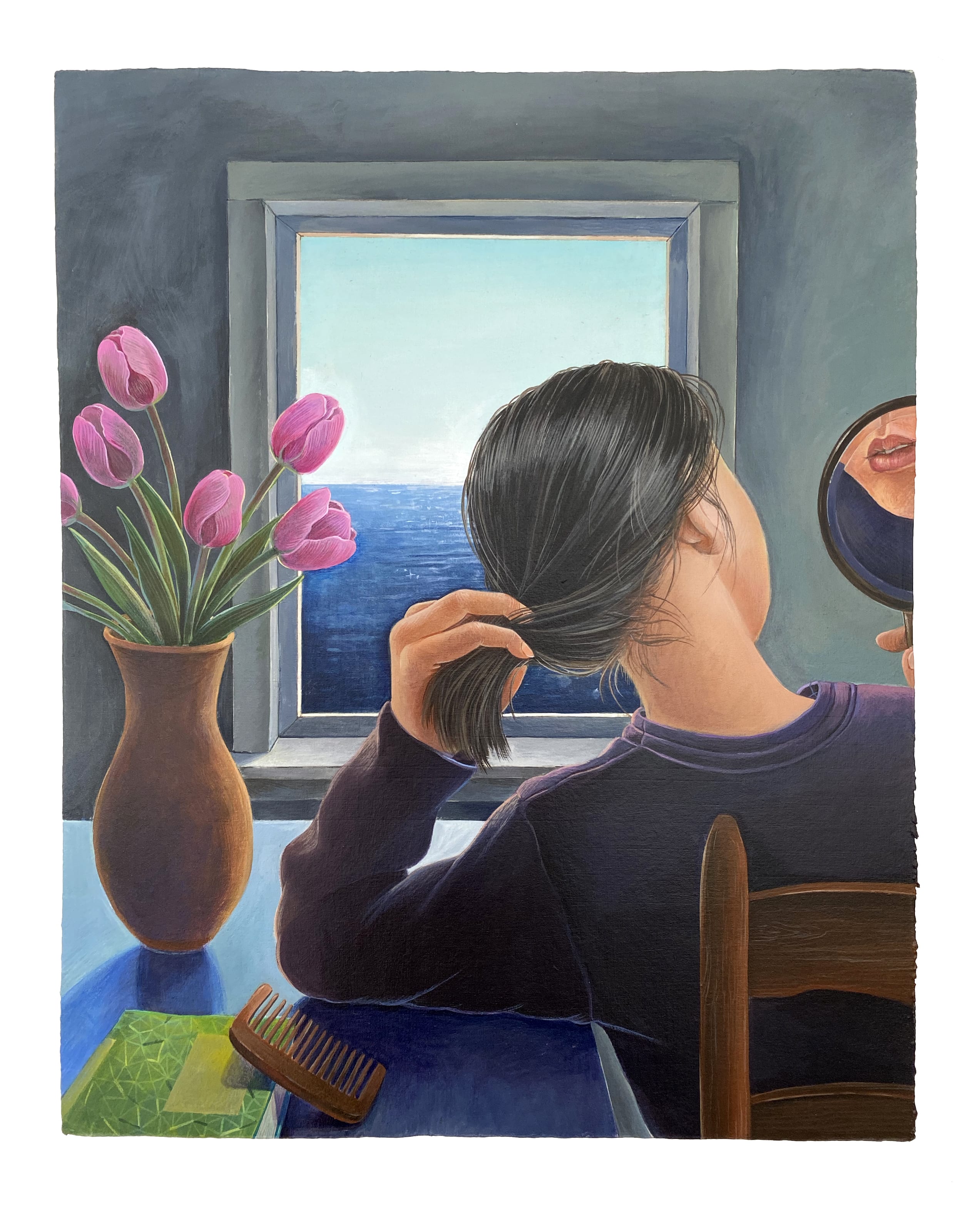Fresh off her first solo exhibition in New York at the Fortnight Institute, artist Sally J. Han pulls cultural references from her birthplace of China as well as her childhood in South Korea to create illustrative and contemplative works. Despite seeing parts of faces, none of Han’s figures look out from the canvas; inviting the viewer to come closer and interpret the scene on their own. The figures she depicts, whether individually or among a group, feel solitary and beautifully inaccessible. The intimate size of her works, also offers this feeling of quietness or seclusion. Viewers must acknowledge how these figures fit into the space and take into consideration the history of their maker. With her multiple backgrounds, Han herself is finding the balance between appealing to her own identity and to the identities of those “regardless of culture.”
Tell us about yourself. Where are you from and when did art first enter your life?
I was born in China and raised in South Korea. My family is Korean immigrants who live in China (they are known as “Joseonjok” ), so growing up I’ve been frequently traveled between China and South Korea until I moved to the U.S. when I was 17. I’ve been always drawing since I was a little kid – I loved it a lot because that was one of the easiest ways to communicate with people who don’t share the same language. I felt more comfortable communicating in pictures rather than words.
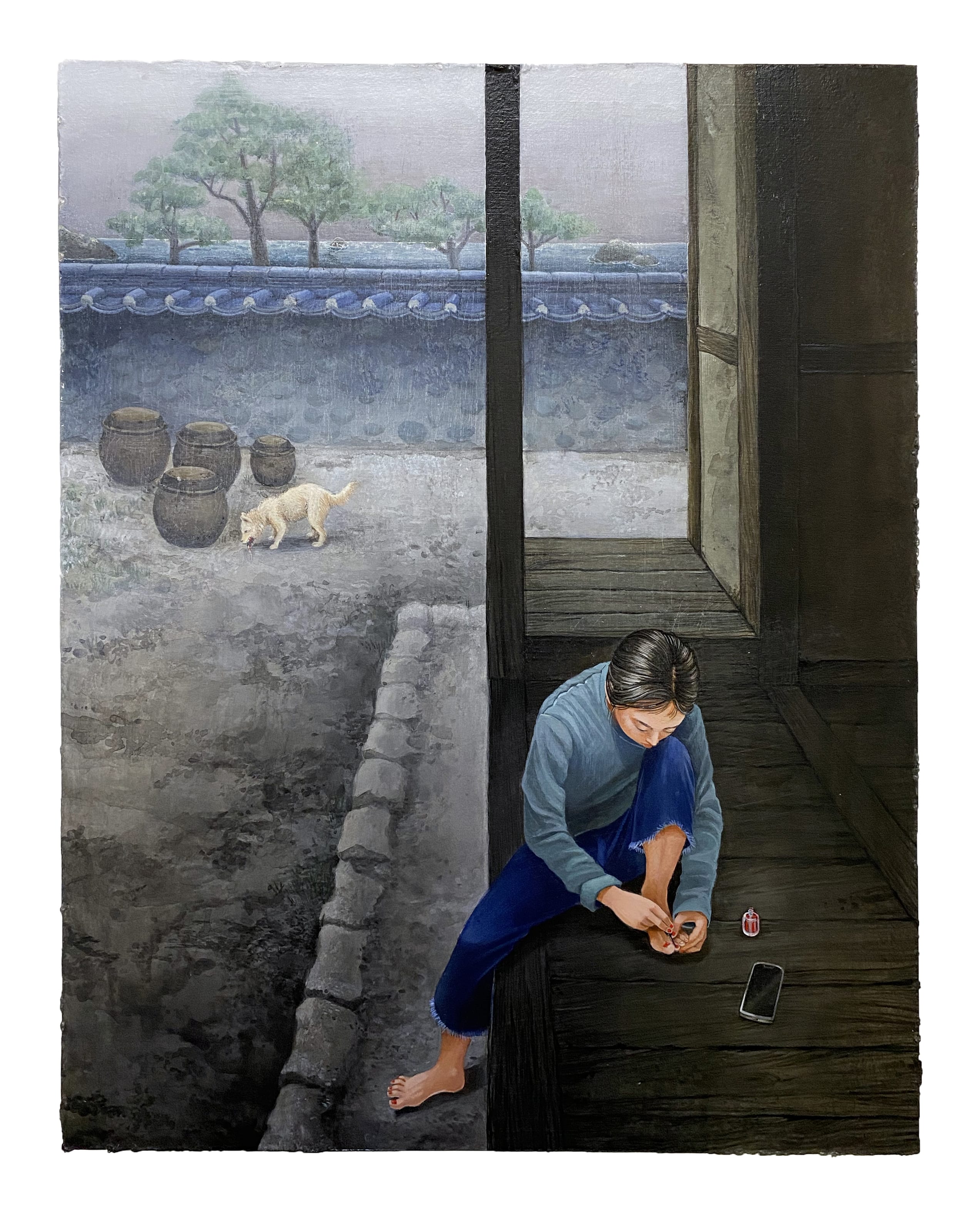
Courtesy of Fortnight Institute and the artist.
What are some larger themes or questions you explore in your art?
Honestly, I really don’t have any esoteric idea behind my pictures. I feel like the more I explain, the more I loose the meaning of the paintings. I do enjoy seeing how my thought process is slowly changing from the beginning to the end as the picture develops. I do sometimes question myself what does this work mean to me, or what makes me eventually follow certain modality, then I move on to developing the next thought, whether or not I find a resolution to the original intent.
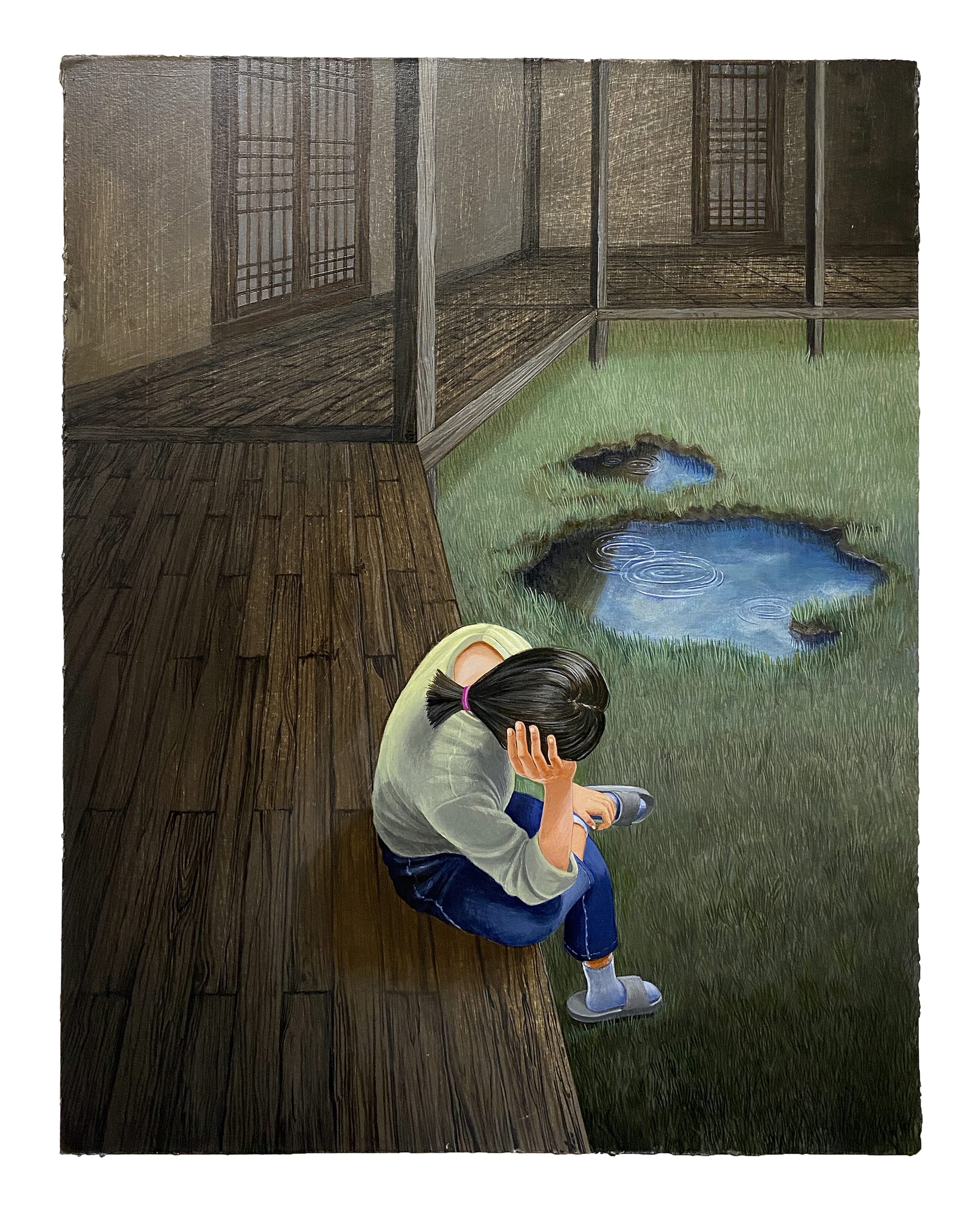
Courtesy of Fortnight Institute and the artist.
Have you always painted in the style your work currently embodies?
Nope! I tried many different styles like loose figure drawings or drawings of the space that has no figures. I am sure my current style will be slowly developed into another step in the near future. Style is like a daily meal, it is necessary but I don’t want to end up eating same thing over and over.
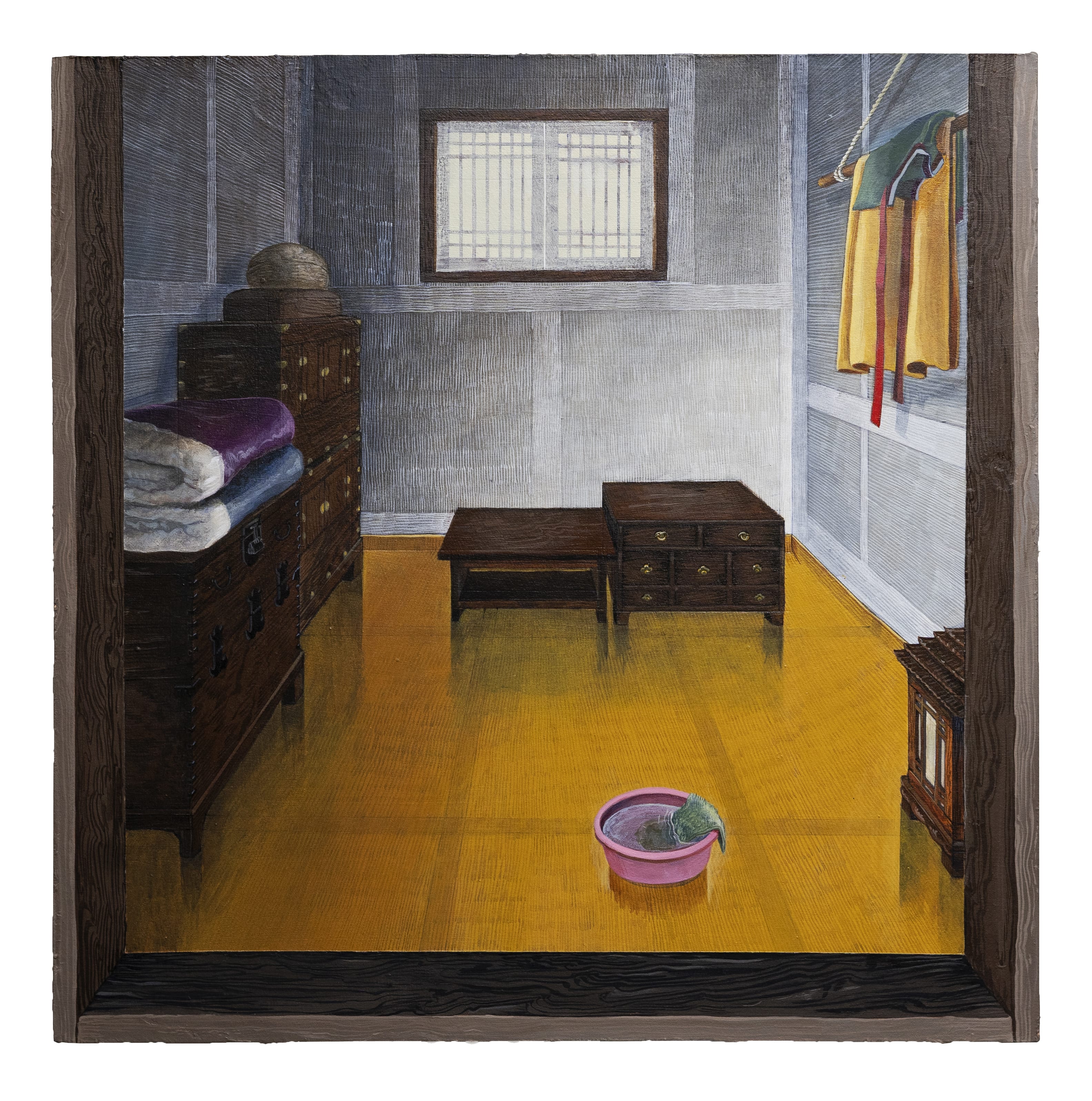
Courtesy of Fortnight Institute and the artist.
You just recently held your first solo exhibition in New York at the Fortnight Institute. Could you comment on that experience and how it may have differed from other shows you have done?
I am VERY fortunate to meet Fabiola and Jane from Fortnight Institute! I often heard criticism about my work that it is too illustrative, small, childish or “surreal” and I wonder why do I have to change my style to fit into the art world when they’re always claiming that art is freedom of expression? I didn’t think I would have a chance to have a solo show until I met Fabiola at Fortnight Institute. During our first studio visit, I was very thankful for her sincere opinion and her understanding about my artworks. Jane also constantly supports me with her kind and thoughtful advice during the preparation for the solo show which kept me sane. I definitely gained more confidence in myself and my work after working with them. And most importantly, it was very fun to make new body of work for my first solo show. It is, in the end, all about the work.
Courtesy of Fortnight Institute and the artist.
What source material do you base your work off of?
Well, I’m not sure if I can explain this well. I recently start to express more about my personal backgrounds and culture that I’ve experienced in China and South Korea. But I don’t wish to limit my paintings in cultural circumstances only. Generally speaking, I am more interested in expressing ironic moments that any human beings would experience in their experiences regardless of culture. I want to achieve poetic sublime.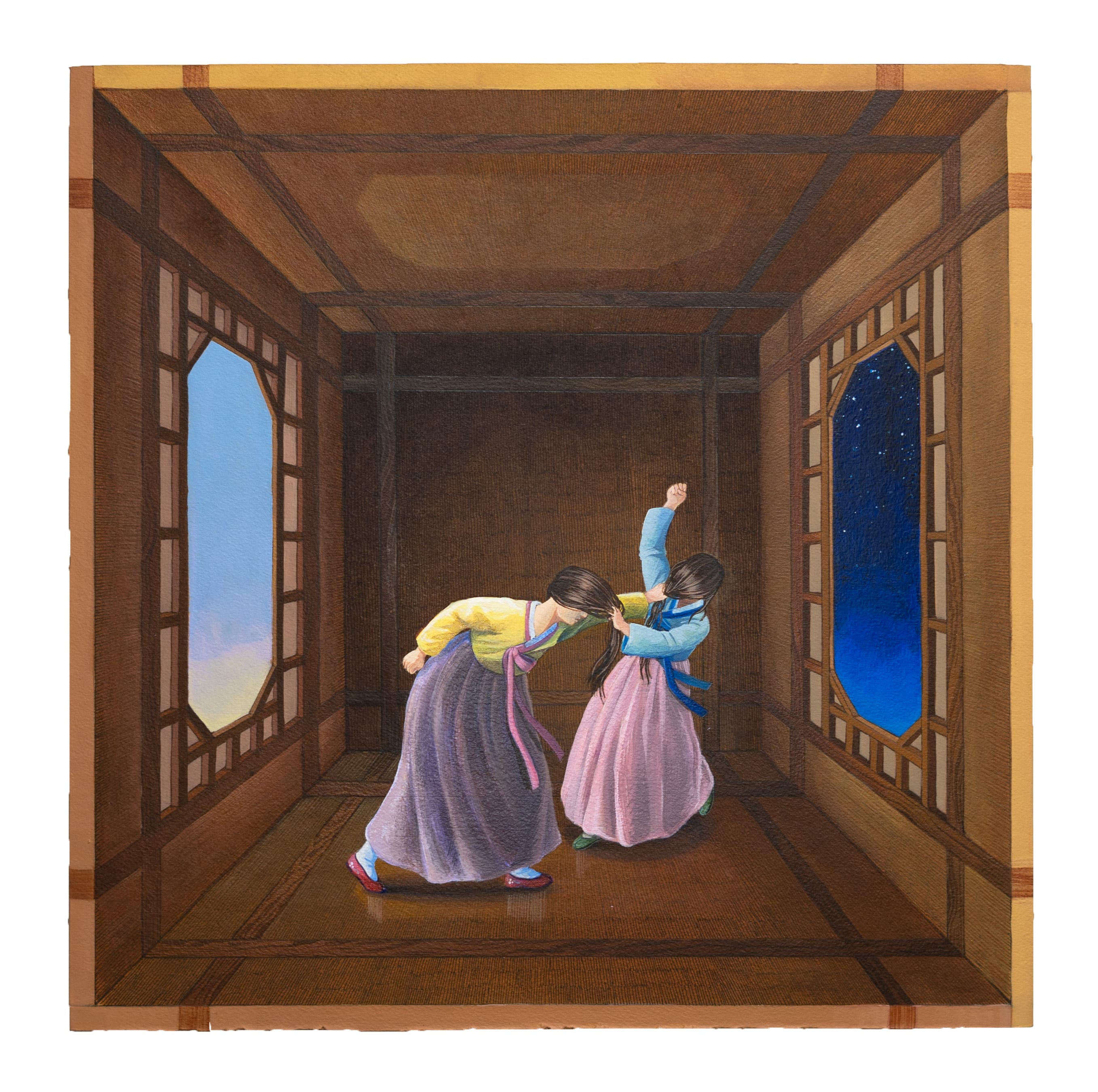
Courtesy of Fortnight Institute and the artist.
From where do you draw inspiration?
I try not to look at other artist’s work like paintings, drawings and sculptures when I am working on my own. Instead, I like to read, listen to good music and watch old films and to learn different ways of describing human psychology and relationship to their surroundings. The spontaneous emotions, like sudden outbursts of anger, never really help me to draw inspiration for my work. I tried but I regret making them next day. I think I like to stay a bit more rational than emotional in terms of choosing the subject. Hopefully in the future I will find the balance between intellect and emotions.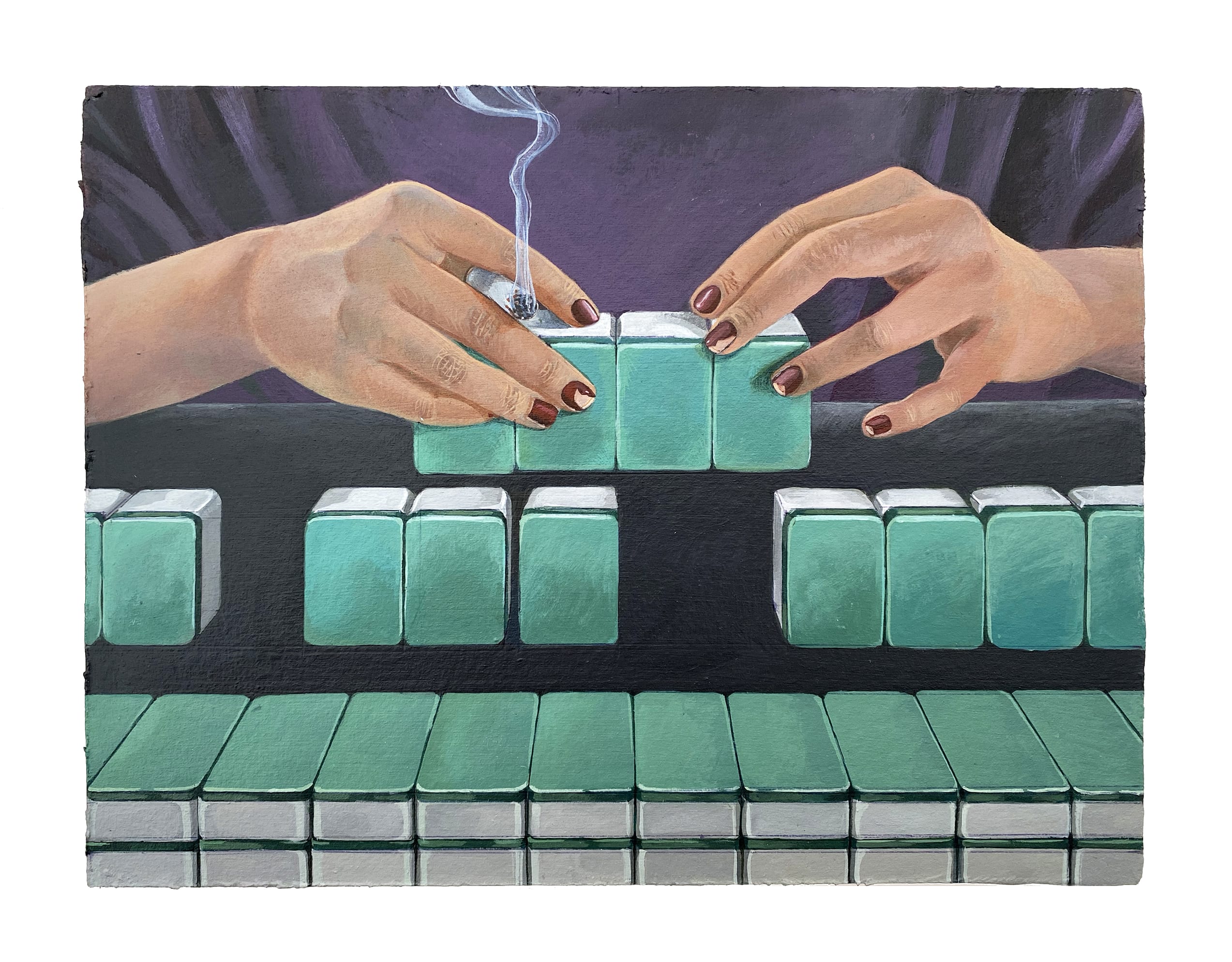
Courtesy of Fortnight Institute and the artist.
Could you describe a perfect day in the studio? How do you first begin a work?
Be productive without any back pains would be a perfect day in my studio! If I have an idea- whether it is specific or not- I start drawing numerous thumbnails of compositions until I find one that most corresponds to my intent. I think of composition as a foundation of my work, so I need to build a strong base where I can freely express my thoughts on it. Sometimes I make small maquettes based on my thumbnails and and try different lighting atmospheres with clamp lights- I learned this method from Michele Fenniak, amazing artist and professor.
I really don’t spend much time on making specific sketches or color studies for my paintings. Once the composition is decided, I start layering thin washes of acrylic paints on prepared panel. I guess my painting is made basis of 50% preparation and 50% of intuition.
Courtesy of Fortnight Institute and the artist.
Does your work reference any art historical figures or movements?
While I am not making my own pictures, I like to observe the work of Gregory Gillespie, Domenico Gnoli, Hans Bellmer, Joo Chung and more. As for the literature, I am currently reading Kenzaburo Oe’s short stories.
Courtesy of Fortnight Institute and the artist.
What do you have coming up?
More drawings and paintings.
Courtesy of Fortnight Institute and the artist.
At the end of every interview, we like to ask the artist to recommend a friend whose work you love for us to interview next. Who would you suggest?
Joo Chung (definitely deserves more exposure), Atlanta Xanthe, Darryl Babatunde Smith, Henry H. Chang, Anna Park, Zachary Sitrin, Jackson O’Brasky… too many to recommend!
